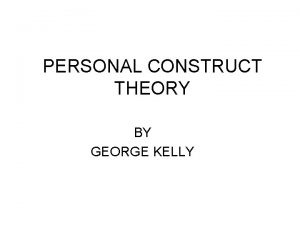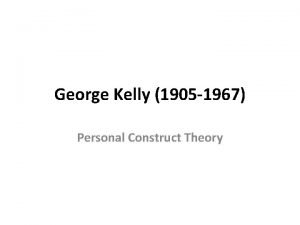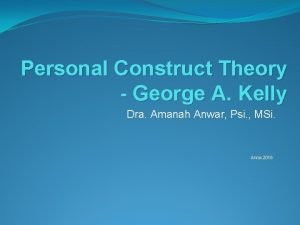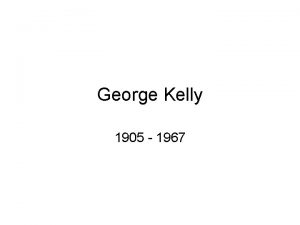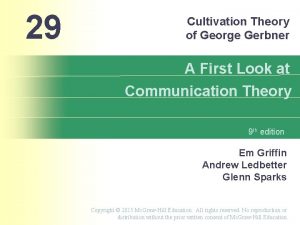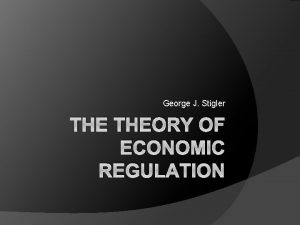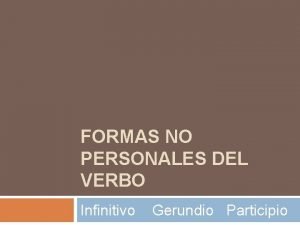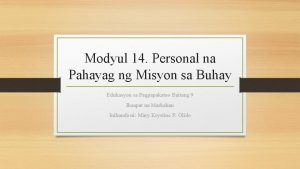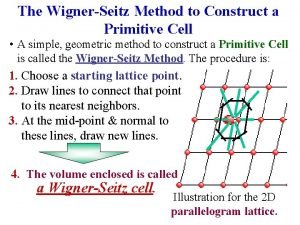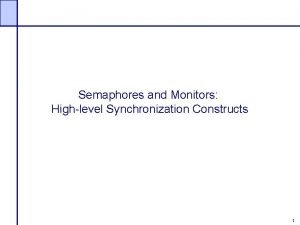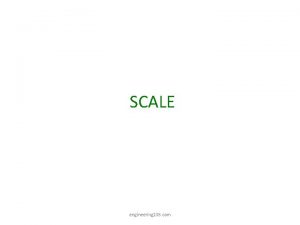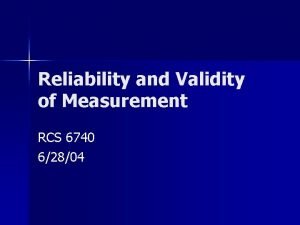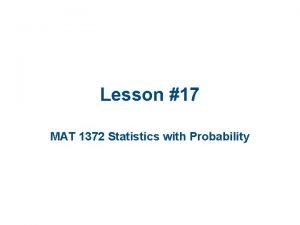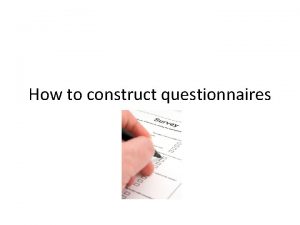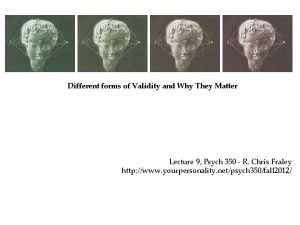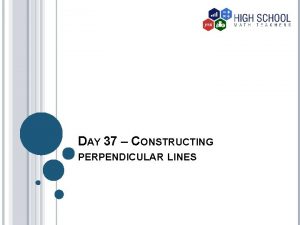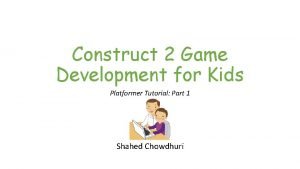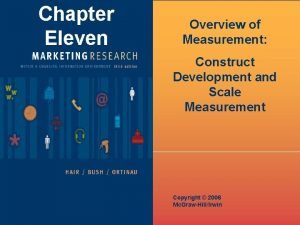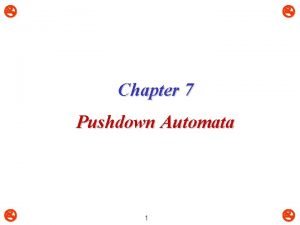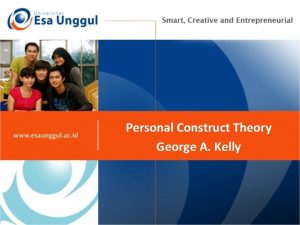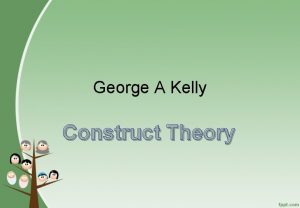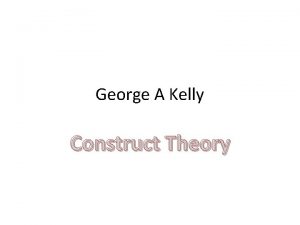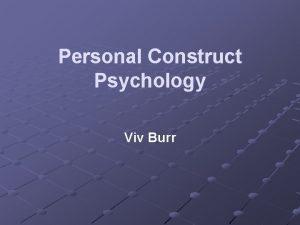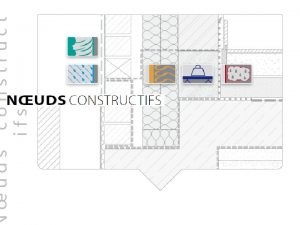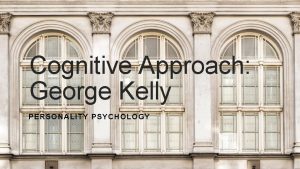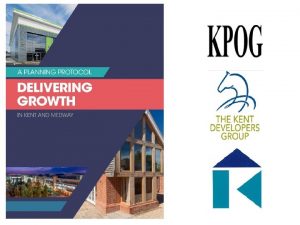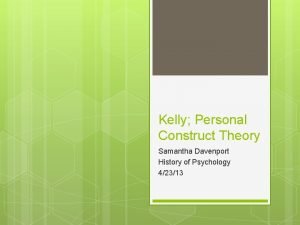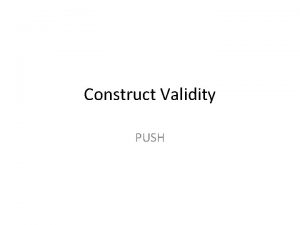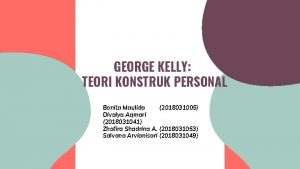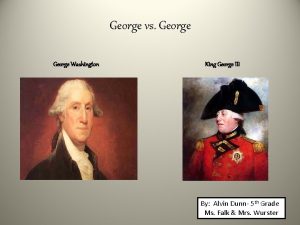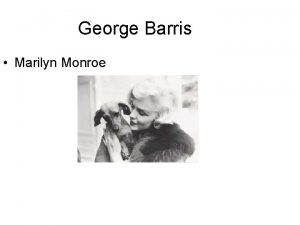George Kelly Personal Construct Theory A Kent Van

































- Slides: 33

George Kelly Personal Construct Theory A. Kent Van Cleave, Jr. , Ph. D.

I. Biography: 1905 -1967 • George Kelly was born in a farming community near Wichita, Kansas. • He graduated with a degree in physics and mathematics from Park College in Missouri in 1926. • Kelly didn’t care for psychology. He was incredulous of Freud’s theory & unimpressed with learning theory as well.

Biography contd. Kelly attended a learning class in college & was bored stiff. He said of his experience: • “The most I could make of it was the S was what you had to have in order to account for the R, and the R was put there so the S would have something to account for…”

Biography contd. • Kelly went to the University of Edinburgh to study education in 1929. While there he developed a growing interest in psychology. • In 1931 he received his Ph. D. from the University of Iowa. For 10 years he worked at Fort Hays Kansas State College, setting up clinics for dustbowl victims in the 1930 s. • He worked extensively with school children – who had normal stressors for the depression era, not psychotics or other severely disturbed.

Biography contd. • WWII, served in the Navy as an aviation psychologist • Kelly spent a year at the University of Maryland & the next 20 years at Ohio State University. • Arrived at OSU to take over clinical program just after Rogers left • There, wrote his two volume work, The Psychology of Personal Constructs (1955)

George Kelly’s Personal Construct Theory • Kelly rejected the need for motivational concepts to explain human behavior. • Argued we are not pushed into action by environmental or unconscious forces. • Kelly saw us as our own personal scientists. People, like scientists, generate & test hypotheses about the way the world works. • This becomes their construction system.

Personal Construct Theory Philosophy was constructive alternativism: There is only one objective reality, but each person experiences it uniquely. • Each perspective has value to its holder. • Because no two people see the world the same, no two people behave the same or have the same personality

George Kelly’s Personal Construct Theory • Kelly rejected the need for motivational concepts to explain human behavior. • Argued we are not pushed into action by environmental or unconscious forces. • Kelly saw us as our own personal scientists. • People, like scientists, generate and test hypotheses about the way the world works. • This becomes their construction system.

The Fundamental postulate & corollaries • Kelly began with one basic postulate upon which his entire theory was based, followed by eleven corollaries that elaborate on theory. • The Fundamental Postulate: A person’s processes are psychologically channelized by the ways in which s/he anticipates events. • Kelly argued that we are tied to our past experiences only in the sense that they have helped to develop our constructs and expectancies for the future.

Templates

Template Matching • You generate a hypothesis about what a person is like, based on observations. • Whenever you see this person, you load the template to predict and interpret events. • Then you collect more information and compare it to your hypothesis / template. • If it’s verified (the person acts the way you predict) you continue using it, otherwise you discard it. • Kelly described this process as template matching. • Very similar to Piaget’s concepts regarding assimilation and accommodation

Personal Constructs: • No two people use identical personal constructs, and no two people organize their constructs in an identical manner. • We can understand the person through understanding her/his constructs.

Personal constructs Bipolar Corollary: “A person's construction system is composed of a finite number of dichotomous constructs. ” Personal constructs are bipolar. • We classify relevant objects in an either/or fashion with each construct. • E. g. , friendly-unfriendly, tall-short, intelligent-stupid, masculine-feminine, etc. • After applying the original construct, we can use other bipolar constructs to further understand the first. • E. g. , If you think a person is intelligent, you may then apply the construct, “academically intelligent or commonsense intelligent. ” --provides a clearer picture!

Personal constructs • Kelly explains in his Construction Corollary that we anticipate events by “construing their replications. ” • Without expectancies we would be overwhelmed with information which would leave us confused & unable to predict anything. • Therefore, we use past experiences to help us organize & anticipate future events.

Personal constructs “Anticipation is both the push & pull of the psychology of personal constructs. ”(1955, p. 49). “It is the future that tantalizes man, not the past. ” Experience corollary: “A person's construction system varies as he successively construes the replication of events. ”

Past experience guides our predictions We use past experience to determine what is important to attend to and what we can ignore. If you know whether a person is quiet or talkative (talkative-quiet construct), you can predict his/her behavior in a given situation more accurately.

Two people, same event, different interpretations • Each person has a different set of constructs used to evaluate a given event. • Two people may use similar constructs on one pole, but not on the other. • E. g. , You might use an outgoing-reserved construct, whereas I might use an outgoing-melancholy construct. Thus, what you see as reserved, I may see as melancholy.

Kelly’s Organizational corollary: • We differ in the way we organize our constructs. • Some constructs are more important than others in interpreting our worlds. • Kelly calls these superordinate personal constructs, as compared to the less important subordinate constructs.

Personal constructs and personality differences Kelly argued that differences in our behavior largely result from differences in the way people “construe the world. ” • Suppose two people meet a new individual named Adam. • Person 1 uses friendly-unfriendly, fun lovingstuffy, and outgoing-shy constructs in forming his template for Adam’s behavior. • Person 2 uses refined-gross, sensitive-insensitive, and intelligent-stupid constructs.

Personal constructs and personality differences After both individuals interact with Adam they walk away with different impressions of Adam. • Person 1 believes that Adam is a friendly, funloving and outgoing person, whereas Person 2 thinks that Adam is gross, insensitive, and stupid. • The same situation is interpreted differently.

A subordinate construct may be subsumed within one side of the superordinate construct: Friendly-Unfriendly Outgoing-Quiet Here, people are judged as either friendly or unfriendly. If judged as friendly, they are then judged as either outgoing or quiet.

Or, you might organize your constructs this way: Friendly-Unfriendly Outgoing-Quiet Here, whether you judge people as friendly or unfriendly, you further judge them as either outgoing or quiet.

Other corollaries See table 13. 1 Choice corollary: People make their own choices (adventure vs. security) Range corollary: Most personal constructs are of limited applicability (have a limited range of convenience). Modulation corollary: Constructs differ in permeability. A permeable corollary is easily modified, can be adapted to new circumstances. Fragmentation corollary: Some constructs are incompatible with each other. Impermeable corollaries are likely to be dysfunctional. Commonality Corollary: People differ in how they interpret events, so each has a unique perspective. Sociality corollary: In order to form relationships with others, we must construe their personal constructs.

Psychological Problems: • Kelly thought that people have psychological problems because their construct systems are faulty, not because of the residue of past traumatic experiences. • Past experiences with an unloving parent or a tragic incident may help explain why people construe the world the way they do, but they are not the cause of the problems. • All disorders result from faulty construct systems.

The route of all madness… • Kelly argued that anxiety diminishes our capacity to predict future events. • When we are anxious we fail to encode stimuli important in making predictions, leaving us feeling confused & disoriented.

Why constructs sometimes fail when we are trying to predict future events Sometimes we develop impermeable constructs. An impermeable construct does not easily allow new elements into its existing range of convenience. This drastically limits your ability to anticipate events, which would make your world feel less predictable & more out of your control. Keep in mind construct systems may be incomplete.

Assessment Interview. Kelly’s primary method. Accept client’s words at face value. Self-characterization sketch. Client writes character sketch as if s/he were a character in a play. Write it as if written by a friend. Useful for learning how client perceive selves in relation to other people.

Assessment Role Construct Repertory Test: Apply and map the constructs we apply to significant others. (Figure 13. 2). Examples: Ethical person Happy person Successful person Boss Rejected teacher Accepted teacher Attractive person Threatening person Pitied person Rejecting person Ex-pal; Pal Ex-boy/girlfriend Spouse Sister; Brother Mother; Father Self

Role Construct Repertory Test Names are sorted into threes. Client is asked to pick which two are most alike, then to state why. Then states opposite for third person. Information is put on a grid, as pictured on previous slide. Anyone else who shares emergent pole characteristic gets a checkmark. By forcing client to make repeated judgments about triads, anticipations, expectations and personal constructs can be uncovered.

Role Construct Repertory Test Interpretation is subjective. Therapy consists of evaluating ineffective constructs and working with client to modify them. Client writes the self-characterization. Therapist writes a fixed role sketch containing constructs that differ from client’s negative self-perceptions. Client is told this is a fictitious character and asked to act out the role.

Role Construct Repertory Test Client comes to see the new constructs as more effective than her/his own and gradually adopts them. Kelly got this idea from seeing a friend who was in a play gradually adopt more and more of the character’s behaviors. Start by practicing the new role sketch in therapist’s office Then for some time period between visits. Assessment of success is subjective.

Research on Rep Test Constructure is stable over time, and test-retest. But validity depends on skill of psychologist scoring it. Personal characteristics tend to be used in describing others. Used in marketing research and for human resources applications. Rep test has been used to develop concept of cognitive complexity vs. simplicity.

Criticisms • Focus on cognitive aspects of self excludes emotional facets • Model of rationality of decision making is not realistic. • Subjectively scored • Construct theory derived from college students+
 George kelly biography
George kelly biography Kelly's cognitive approach to personality
Kelly's cognitive approach to personality Fixed role therapy kelly
Fixed role therapy kelly Fixed role therapy kelly adalah
Fixed role therapy kelly adalah Modulation corollary
Modulation corollary George alexander kelly
George alexander kelly Walter mischel kişilik kuramı kodlama
Walter mischel kişilik kuramı kodlama Personal construct examples
Personal construct examples Personality construct examples
Personality construct examples King george vs george washington
King george vs george washington George washington and john adams venn diagram
George washington and john adams venn diagram George van voorn
George van voorn George gerbner theory
George gerbner theory George stigler the theory of economic regulation
George stigler the theory of economic regulation Formas personales y formas no personales
Formas personales y formas no personales Adivinanzas habitos de higiene
Adivinanzas habitos de higiene Bakit nararapat gawin ang personal na pahayag ng misyon
Bakit nararapat gawin ang personal na pahayag ng misyon What material is common in making electrical gadget
What material is common in making electrical gadget What is wigner seitz primitive cell
What is wigner seitz primitive cell Taino diet
Taino diet Semaphore
Semaphore Plain scale and diagonal scale
Plain scale and diagonal scale Construct validity
Construct validity Construct validity meaning
Construct validity meaning How to construct a parallel line
How to construct a parallel line Construct the sampling distribution of the sample means
Construct the sampling distribution of the sample means How to construct a survey
How to construct a survey Cladistics
Cladistics Criterion validity
Criterion validity Construct perpendicular lines
Construct perpendicular lines Construct 2 sprite animation
Construct 2 sprite animation Community health nursing theories
Community health nursing theories Construct development
Construct development Pda for wcw^r
Pda for wcw^r
